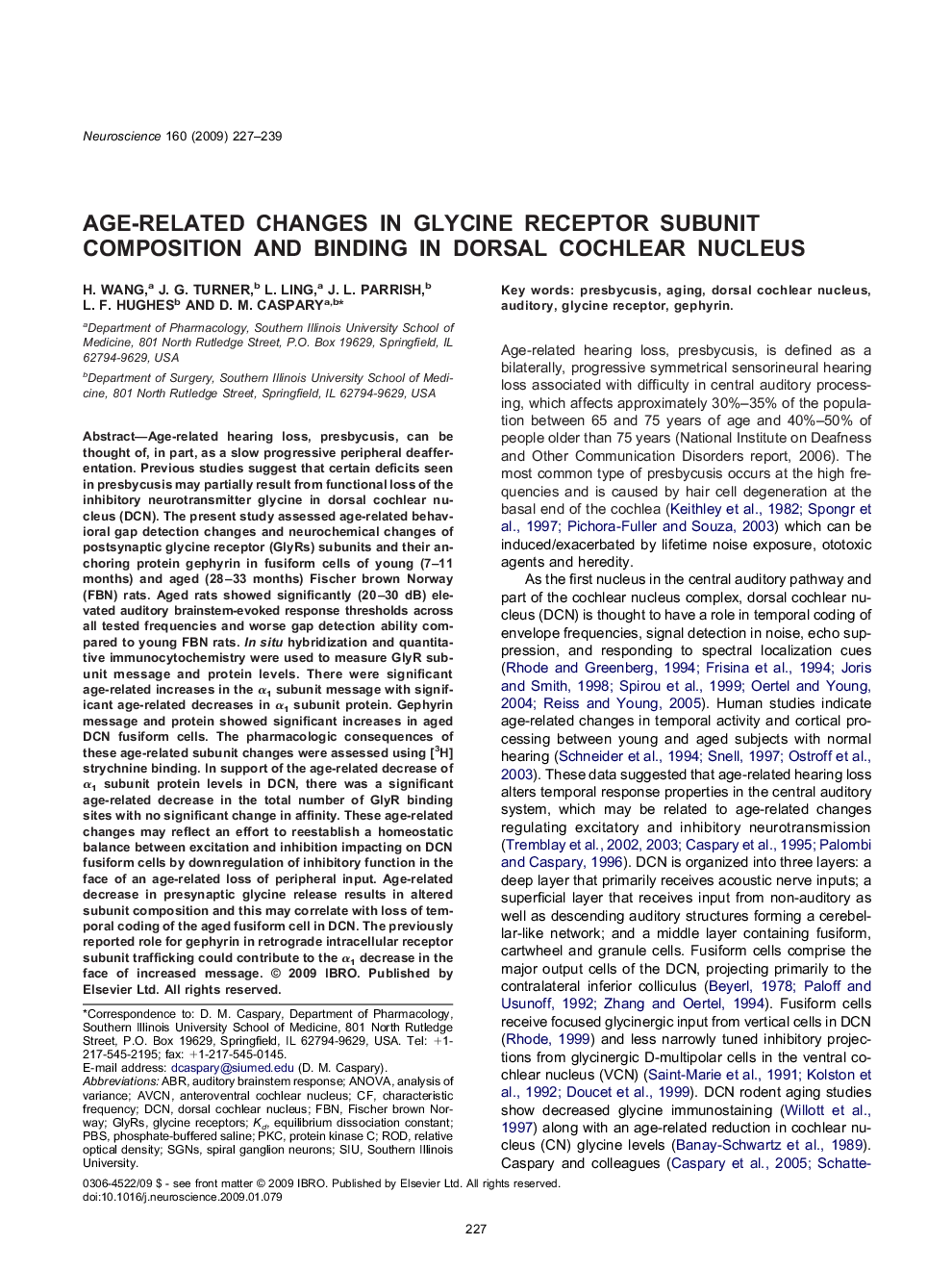| Article ID | Journal | Published Year | Pages | File Type |
|---|---|---|---|---|
| 4340094 | Neuroscience | 2009 | 13 Pages |
Age-related hearing loss, presbycusis, can be thought of, in part, as a slow progressive peripheral deafferentation. Previous studies suggest that certain deficits seen in presbycusis may partially result from functional loss of the inhibitory neurotransmitter glycine in dorsal cochlear nucleus (DCN). The present study assessed age-related behavioral gap detection changes and neurochemical changes of postsynaptic glycine receptor (GlyRs) subunits and their anchoring protein gephyrin in fusiform cells of young (7–11 months) and aged (28–33 months) Fischer brown Norway (FBN) rats. Aged rats showed significantly (20–30 dB) elevated auditory brainstem-evoked response thresholds across all tested frequencies and worse gap detection ability compared to young FBN rats. In situ hybridization and quantitative immunocytochemistry were used to measure GlyR subunit message and protein levels. There were significant age-related increases in the α1 subunit message with significant age-related decreases in α1 subunit protein. Gephyrin message and protein showed significant increases in aged DCN fusiform cells. The pharmacologic consequences of these age-related subunit changes were assessed using [3H] strychnine binding. In support of the age-related decrease of α1 subunit protein levels in DCN, there was a significant age-related decrease in the total number of GlyR binding sites with no significant change in affinity. These age-related changes may reflect an effort to reestablish a homeostatic balance between excitation and inhibition impacting on DCN fusiform cells by downregulation of inhibitory function in the face of an age-related loss of peripheral input. Age-related decrease in presynaptic glycine release results in altered subunit composition and this may correlate with loss of temporal coding of the aged fusiform cell in DCN. The previously reported role for gephyrin in retrograde intracellular receptor subunit trafficking could contribute to the α1 decrease in the face of increased message.
